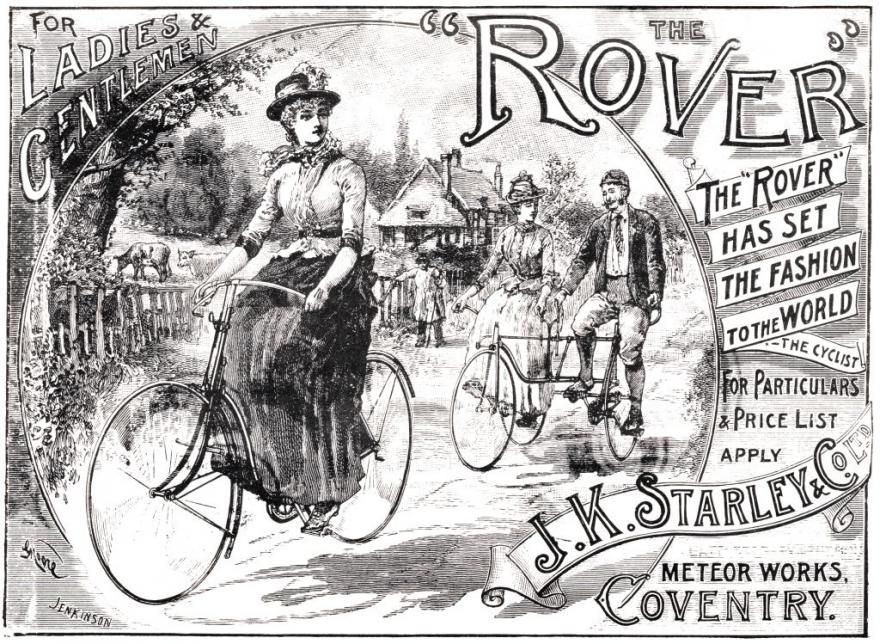How the safety bicycle changed the world

This excerpt from Margaret Guroff’s history The Mechanical Horse focuses on the democratization of the bicycle at the end of the nineteenth century, as new designs made bikes more appealing to businessmen, children, and especially women.
In the 1890s, bikes got lighter as well as more comfortable. The average weight of a bicycle dropped by more than half during the decades first five years, falling from 50 pounds to 23. And since new gearings were able to mimic wheels larger than those of the largest Ordinary, speed records fell too. In 1894, while riding a pneumatic-tired safety around a track in Buffalo, New York, the racer John S. Johnson went a mile in just over one minute and thirty-five seconds, a rate of nearly thirty-eight miles an hour. He beat the previous mile record for a safety by fourteen seconds, and the record for an Ordinary by nearly a minute — and the record for a running horse by one-tenth of a second.
The Ordinary — which had by then acquired the derisive nickname of penny-farthing, after the old British penny and much smaller farthing (quarter-penny) coins — became obsolete. High-wheelers that had sold for $150 to $300 just a year or two earlier were going for as little as $10.
The first safeties, meanwhile, cost an average of $150 during a time when the average worker earned something like $12 a week. At such prices, the new bikes targeted the same upscale demographic as the tricycle. But a strong market for safeties among well-to-do women goosed production, and competition among manufacturers reduced prices, making the bikes affordable to more would-be riders and further fueling demand. In 1895, Americas 300 bicycle companies produced 500,000 safeties at an average price of $75, according to one encyclopedias yearbook. Even manufacturers were surprised at the demand among women, who thrilled to the new machines exhilarating ride. As one female journalist wrote, “If a pitying Providence should suddenly fit light, strong wings to the back of a toiling tortoise, that patient cumberer of the ground could hardly feel a more astonishing sense of exhilaration than a woman experiences when first she becomes a mistress of her wheel.”





Stay Connected